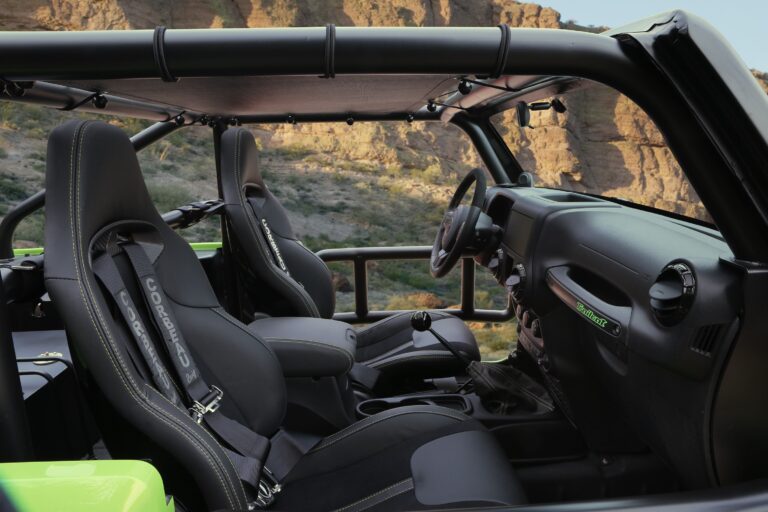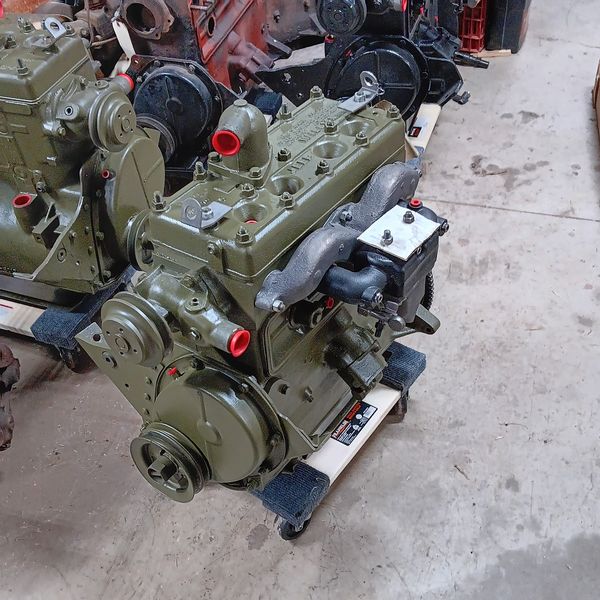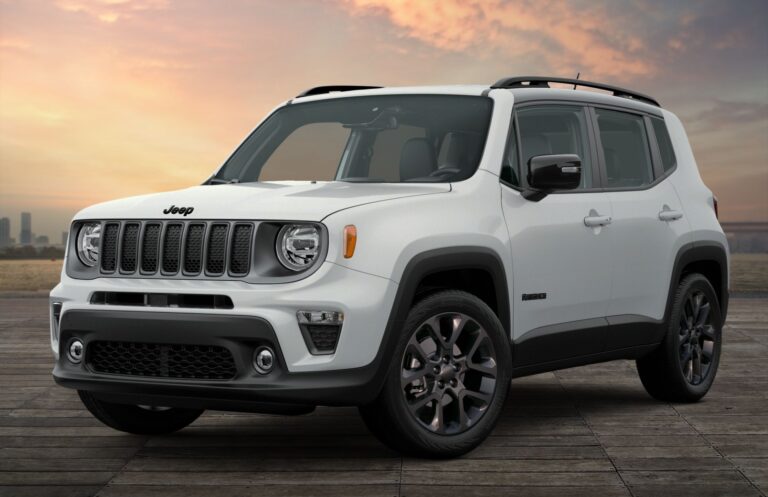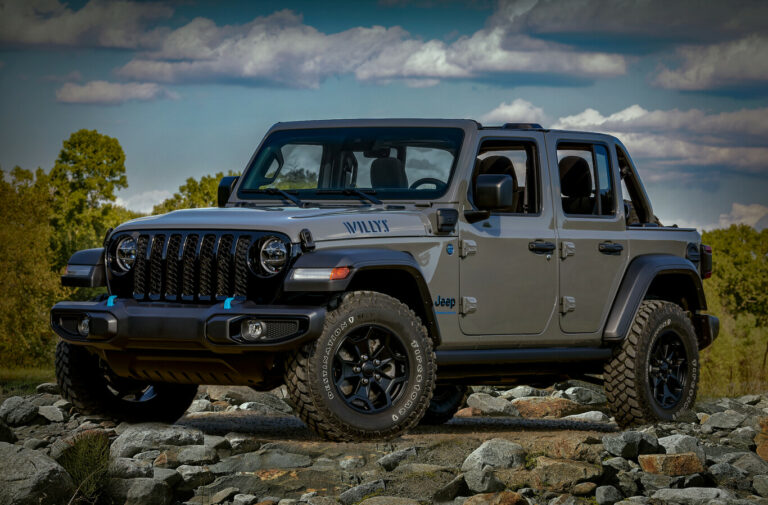1989 Jeep Wagoneer For Sale: Your Comprehensive Guide to Acquiring an American Icon
1989 Jeep Wagoneer For Sale: Your Comprehensive Guide to Acquiring an American Icon jeeps.truckstrend.com
The year 1989 holds a special place in the history of the automotive world, particularly for enthusiasts of classic SUVs. It marks one of the final years of production for a vehicle that had, by then, become an undisputed American icon: the Jeep Wagoneer. More specifically, the 1989 model year is almost exclusively associated with the Jeep Grand Wagoneer, representing the pinnacle of its luxury-oriented, wood-paneled glory. For sale today, these vehicles aren’t just old cars; they are rolling pieces of history, symbols of a bygone era of rugged luxury and timeless design. This comprehensive guide will navigate you through everything you need to know about finding, evaluating, and ultimately owning a 1989 Jeep Wagoneer for sale, transforming a mere transaction into an acquisition of a cherished classic.
The End of an Era: Why the 1989 Wagoneer Stands Out
1989 Jeep Wagoneer For Sale: Your Comprehensive Guide to Acquiring an American Icon
The 1989 Jeep Wagoneer, almost always referred to as the Grand Wagoneer, represents the culmination of a design that began in 1963. While the body style remained largely unchanged for decades, the 1980s saw significant refinements, particularly in luxury appointments. By 1989, the Grand Wagoneer was a fully-fledged luxury SUV, preceding the modern SUV craze by decades. It boasted standard features like power windows, power locks, air conditioning, cruise control, leather upholstery, and that unmistakable faux-woodgrain paneling that became its signature.
What makes the 1989 model particularly noteworthy is its position towards the very end of the SJ platform’s extraordinary 29-year run (production finally ceased in 1991). This means it benefited from years of iterative improvements and refinements, making it arguably one of the most developed and reliable versions of the classic Wagoneer. Powered by the venerable AMC 360 cubic inch (5.9L) V8 engine, paired with a Torqueflite 727 automatic transmission and the robust Selec-Trac (NP229) full-time four-wheel-drive system, it offered a blend of V8 power, surprising comfort, and legendary off-road capability. Its unique blend of utility and upscale appeal makes it highly sought after by collectors, classic car enthusiasts, and those simply looking for a distinctive and capable vintage vehicle.
What to Look For: Key Inspection Points for a 1989 Wagoneer
Acquiring a 1989 Jeep Wagoneer for sale requires a meticulous inspection, as even well-maintained examples will have quirks associated with their age. Here’s a breakdown of critical areas:
- Body and Frame (The Rust Battle): This is paramount. Wagoneers are notorious for rust, especially in the rocker panels, wheel wells, floorboards, tailgate, and underbody. Check thoroughly, ideally with the vehicle on a lift. Pay close attention to the structural integrity of the frame. The woodgrain paneling itself, while iconic, can also hide underlying body issues if not properly maintained. Look for fading, peeling, or bubbling.
- Engine (AMC 360 V8): The AMC 360 is generally robust, but check for common issues. Look for oil leaks (especially from the valve covers, rear main seal, and oil pan), listen for knocking or excessive ticking, and check for smoke from the exhaust (blue for oil, white for coolant). Ensure proper fluid levels and clarity. Ask about recent maintenance, particularly carburetor rebuilds or ignition system overhauls.
- Transmission (Torqueflite 727): This is a durable automatic transmission. Check fluid condition (should be reddish, not burnt or black). Test all gears, including reverse, and ensure smooth shifts without excessive slipping or harshness.
- Four-Wheel Drive System (Selec-Trac NP229): Engage 4-Hi and 4-Lo. Listen for grinding or clunking. Test the vacuum-operated front axle disconnect; it’s a common failure point that can prevent 4WD engagement. Ensure the transfer case shifts cleanly.
- Interior Condition: The leather seats, headliner, and carpets are prone to wear, cracks, tears, and sagging after 30+ years. Check the functionality of all power accessories: windows (especially the rear tailgate window, a common and often costly repair), power locks, mirrors, and seats. Test the air conditioning and heating system thoroughly.
- Electrical System: Beyond the power accessories, check all lights, gauges, wipers, and the radio. Wiring can become brittle over time, leading to intermittent issues.
- Suspension and Brakes: Inspect springs, shocks, bushings, and steering components for wear. Drive the vehicle to assess steering play, braking performance (listen for squealing or grinding), and any unusual noises over bumps. Check for brake fluid leaks.
- Tires: Ensure tires are in good condition with adequate tread and no dry rot.


Understanding the Market: Pricing and Valuation
The price of a 1989 Jeep Wagoneer for sale can vary dramatically, from a few thousand dollars for a "project" vehicle to upwards of $50,000 or even $100,000 for a fully restored, concours-quality example. Factors influencing price include:
- Overall Condition: This is the biggest determinant. Is it a rusty shell, a decent driver, a "survivor" with original paint and interior in good shape, or a frame-off restoration?
- Mileage: Lower mileage generally commands higher prices, though documented maintenance history is often more important than just the odometer reading.
- Originality: Highly original examples, especially those with original paint and interior in good condition, are increasingly valued by collectors.
- Documentation: Service records, original owner’s manuals, and build sheets add significant value.
- Location: Prices can vary regionally based on climate (less rust in dry climates) and local demand.
- Restoration Quality: If restored, the quality of the work (paint, interior, mechanicals) heavily impacts the price. A poor restoration can actually decrease value.

It’s crucial to research recent sales of similar vehicles and understand what various price points typically offer. Don’t be afraid to walk away if the price doesn’t align with the vehicle’s condition.
Types of 1989 Wagoneers For Sale: From Project to Pristine
When searching for a 1989 Jeep Wagoneer for sale, you’ll encounter a spectrum of conditions:
- The "Project" (Typically $5,000 – $15,000): These vehicles require significant mechanical, body, and interior work. They might be non-running, have extensive rust, or severe electrical issues. Best for experienced DIYers with a passion and budget for restoration.
- The "Driver Quality" (Typically $15,000 – $30,000): These are running and driving, but will have visible flaws like paint imperfections, interior wear, or minor mechanical issues that need attention. They can be enjoyed immediately but will require ongoing investment.
- The "Good/Survivor" (Typically $30,000 – $50,000): These are well-maintained examples that have been cared for, with mostly original components in good working order. They might have minor cosmetic flaws but present very well.
- The "Excellent/Restored" (Typically $50,000+): These are either meticulously preserved low-mileage originals or vehicles that have undergone professional, frame-off restorations. They are show-quality and demand premium prices.
The Ownership Experience: Pros and Cons
Owning a 1989 Jeep Wagoneer is a unique experience with its own set of joys and challenges.
Pros:
- Timeless Appeal: The iconic design never goes out of style.
- Comfortable Ride: Compared to many SUVs of its era, the Wagoneer offers a surprisingly smooth and comfortable ride.
- Capable Off-Roader: With its robust 4×4 system, it’s still highly capable for light off-roading or navigating adverse weather.
- Strong Community: A dedicated community of enthusiasts offers invaluable support, advice, and resources.
- Relatively Simple Mechanics: The AMC 360 and Torqueflite 727 are well-understood and can often be repaired by a competent mechanic.
- Investment Potential: Well-maintained or restored examples are appreciating in value.
Cons:
- Fuel Economy: Expect single-digit MPG (typically 8-12 MPG).
- Parts Availability: While many mechanical parts are available, some interior trim pieces, specific electrical components, or body panels can be scarce and expensive.
- Deferred Maintenance: Many examples will have a long list of items that need attention due to age and neglect.
- Rust: The constant battle against corrosion, especially if the vehicle lived in a salty climate.
- Electrical Gremlins: Older wiring can lead to frustrating intermittent issues.
Tips for a Successful Purchase
- Do Your Research: Understand the common pitfalls and features of the 1989 model year.
- Set a Realistic Budget: Not just for the purchase price, but for immediate and ongoing maintenance.
- Pre-Purchase Inspection (PPI): Absolutely essential. Hire a mechanic specializing in older American vehicles or, ideally, classic Jeeps, to perform a thorough inspection. This can save you thousands down the line.
- Test Drive Extensively: Drive at various speeds, on different road surfaces, and engage 4WD. Listen for unusual noises, feel for vibrations, and check steering and braking.
- Verify Documentation: Ensure the title is clean and matches the VIN. Look for maintenance records.
- Negotiate: Always be prepared to negotiate the price, especially after a PPI reveals issues.
Financing and Insurance Considerations
Financing a 1989 Jeep Wagoneer can be different from a modern car. Traditional banks might be hesitant unless the vehicle is in excellent condition and appraised at a significant value. Specialty classic car lenders are often a better option. For insurance, consider classic car insurance providers (e.g., Hagerty, Grundy). They understand the unique value and usage of classic vehicles and often offer more favorable rates than standard insurers, provided the vehicle meets their criteria (e.g., limited mileage, secure storage).
1989 Jeep Wagoneer For Sale: Price Guide
| Condition Category | Estimated Price Range (USD) | Key Characteristics & What to Expect |
|---|---|---|
| Project / Parts Car | $5,000 – $15,000 | Non-running or barely running. Significant rust, major mechanical issues, worn-out interior. Requires extensive restoration. |
| Driver Quality | $15,000 – $30,000 | Running and driving. Visible cosmetic flaws (paint fade, dents, interior wear). Minor mechanical issues. Can be used but needs work. |
| Good / Survivor | $30,000 – $50,000 | Well-maintained, mostly original condition. Minor wear consistent with age. All systems generally functional. Presents well. |
| Excellent / Restored | $50,000 – $100,000+ | Meticulously preserved low-mileage original or professional frame-off restoration. Show-quality paint, interior, and mechanicals. |
Note: These prices are estimates and can vary based on specific vehicle history, features, market demand, and geographical location.
Frequently Asked Questions (FAQ)
Q1: Is the 1989 Jeep Wagoneer reliable?
A1: The core mechanicals (AMC 360 engine, Torqueflite 727 transmission, Selec-Trac transfer case) are generally robust if maintained. However, electrical components, vacuum lines, and power accessories can be prone to issues due to age. Regular maintenance is key.
Q2: What kind of fuel economy can I expect?
A2: Don’t expect much. Most 1989 Wagoneers average between 8-12 miles per gallon (MPG), depending on driving conditions and maintenance.
Q3: Are parts hard to find for a 1989 Wagoneer?
A3: Many common mechanical parts are still available due to the longevity of the AMC 360 and Torqueflite 727. However, specific interior trim, body panels (especially rust-free ones), and certain electrical components can be challenging and expensive to source. A dedicated aftermarket exists, but some items require diligent searching.
Q4: Can a 1989 Jeep Wagoneer be a daily driver?
A4: While possible, it’s generally not recommended without significant investment in restoration and ongoing maintenance. The fuel economy, lack of modern safety features (airbags, ABS), and potential for age-related breakdowns make it less ideal for daily commuting compared to a modern vehicle. Many owners use them as weekend cruisers or secondary vehicles.
Q5: What’s the difference between a Wagoneer and a Grand Wagoneer for 1989?
A5: By 1989, "Grand Wagoneer" was the primary model offered. The "Wagoneer" nameplate had been largely retired or applied to smaller, XJ Cherokee-based models (like the Wagoneer Limited). So, if you’re looking for the classic full-size, wood-paneled SUV from 1989, you’re almost certainly looking for a Grand Wagoneer.
Q6: What are the most common problems to look out for?
A6: Rust (rockers, quarter panels, tailgate), failing power tailgate window, electrical gremlins, vacuum leaks (affecting 4WD and HVAC), oil leaks from the AMC 360, and worn interior components (headliner, seats).
Conclusion
The 1989 Jeep Wagoneer for sale is more than just a used car; it’s an investment in automotive heritage and a statement of classic American style. Its blend of rugged capability and surprising luxury forged a path for the modern SUV, and its distinctive woodgrain exterior ensures it will always turn heads. While owning one requires commitment—both financially and in terms of maintenance—the rewards of piloting such an iconic vehicle are immense. With careful research, a thorough inspection, and a clear understanding of what you’re buying, you can find a piece of the past that offers a truly unique and enjoyable driving experience for years to come. Embrace the journey, and you’ll soon understand why the Grand Wagoneer remains a cherished classic.






